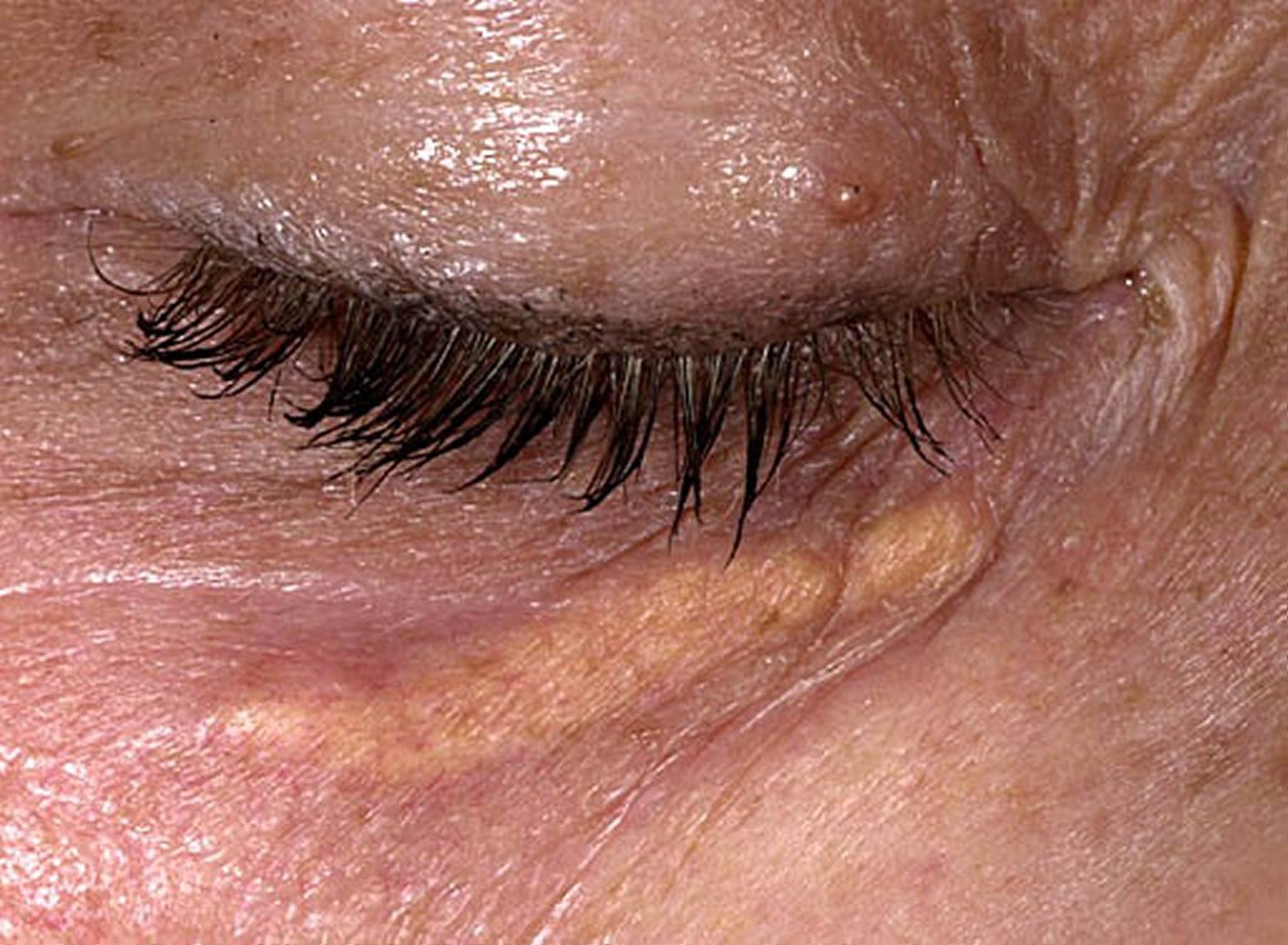Topic Resources
The skin of the eyelids is a common site for benign and malignant growths.
Xanthelasma
Image provided by Thomas Habif, MD.
Xanthelasma is a common, benign deposit of yellow-white flat plaques of lipid material that occur subcutaneously on the upper and lower eyelids. Although some people with xanthelasmas have dyslipidemias, most do not. Diagnosis is by appearance. No treatment is necessary, although xanthelasmas can be removed for cosmetic reasons, and underlying dyslipidemias should be treated.
Basal cell carcinoma
RALPH C. EAGLE, JR/SCIENCE PHOTO LIBRARY
Basal cell carcinoma frequently occurs at the eyelid margins and classically is associated with loss of eyelashes as shown, at the inner canthus, and on the upper cheek. Metastasis is rare. Biopsy establishes the diagnosis.
Treatment is surgical excision using conventional techniques or by Mohs surgery. For locally advanced or metastatic basal cell carcinoma, treatment with small-molecule inhibitors of the Hedgehog signaling pathway (eg, vismodegib or sonidegib) show promise to avoid resection of the globe (Treatment is surgical excision using conventional techniques or by Mohs surgery. For locally advanced or metastatic basal cell carcinoma, treatment with small-molecule inhibitors of the Hedgehog signaling pathway (eg, vismodegib or sonidegib) show promise to avoid resection of the globe (1).
Other malignant growths
Other types of malignant growths are less common; they include squamous cell carcinoma, sebaceous gland carcinoma, and melanoma. Eyelid growths may simulate chronic blepharitis or chronic chalazion. Therefore, chronic blepharitis, chronic chalazion, or similar lesions should be biopsied if the patient is unresponsive to initial treatment.
General reference
1. Allen RC: Surgical management of periocular cancers: High- and low-risk features drive treatment. Curr Oncol Rep 19(9):57, 2017. doi: 10.1007/s11912-017-0618-1

